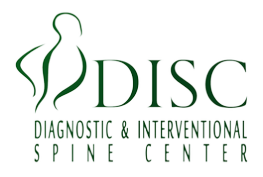Herniated Disc
A herniated disc occurs when the soft, gel-like center of a spinal disc (nucleus pulposus) pushes through a tear in the disc’s outer layer (annulus fibrosus). This protrusion can press on nearby nerves, causing pain and other symptoms.
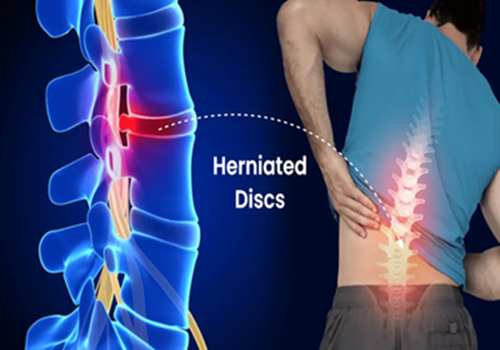
Symptoms of Back Pain
- Lower Back Pain: Pain that may radiate to the buttocks, thighs, or legs.
- Sciatica: Pain, numbness, or tingling down one leg, typically associated with herniation in the lower back.
- Neck Pain: Pain in the neck, which can radiate to the shoulders, arms, or hands, if the herniated disc is in the cervical spine.
- Weakness: Muscle weakness in the arms or legs, depending on the location of the herniated disc.
- Numbness: Reduced sensation in the affected areas
Back Pain Causes
- Aging: Disc degeneration over time can increase the risk of a herniated disc.
- Injury or Trauma: Heavy lifting, sudden movements, or accidents can cause a disc to herniate.
- Poor Posture: Prolonged poor posture can contribute to disc problems.
- Genetics: Family history can play a role in susceptibility to disc herniation.
- Obesity: Excess weight can put added stress on the spine, increasing the risk of disc issues.
Lifestyle Effects to Back Pain
- Reduced Mobility: Pain and discomfort can limit daily activities and reduce overall physical activity.
- Chronic Pain: Persistent pain can affect quality of life, leading to emotional stress or depression.
- Work Limitations: Certain occupations that involve heavy lifting or prolonged sitting can exacerbate symptoms.
- Sleep Disruptions: Pain may interfere with sleep, leading to fatigue and reduced overall well-being.
Prevention of Back Pain
- Rest and Activity Modification: Avoid activities that worsen the pain. Gentle movement and rest can help.
- Heat and Cold Therapy: Using heat or cold packs on the affected area can effectively manage pain and inflammation.
- Over-the-Counter Pain Relievers: Medications like ibuprofen or acetaminophen can help manage pain and reduce inflammation.
- Stretching and Strengthening Exercises: Gentle stretching and strengthening exercises can improve flexibility and support the spine.
- Proper Posture: Maintaining good posture and ergonomic practices can prevent further strain on the spine.
- Massage Therapy: Gentle massage can help alleviate muscle tension and pain.
- Weight Management: Maintaining a healthy weight can reduce stress on the spine and prevent further issues.
Muscle Strain
Muscle strain occurs when muscles are overstretched or torn, often due to overuse, improper technique, or heavy lifting. Symptoms include pain, stiffness, muscle spasms, and swelling. Treatment involves rest, ice or heat therapy, over-the-counter pain relievers, and gentle stretching to alleviate discomfort and aid recovery.
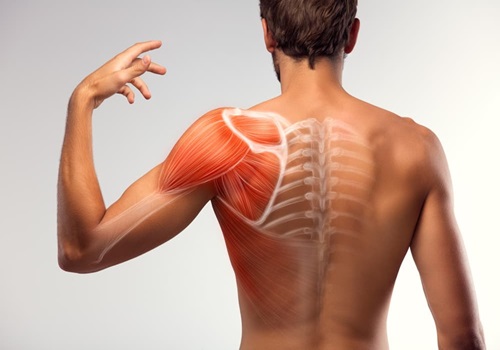
Symptoms of Back Pain:
- Sharp or Dull Pain: Pain can be immediate and vary in intensity.
- Muscle Spasms: Involuntary contractions of the muscle.
- Stiffness: Reduced flexibility and range of motion.
- Swelling or Bruising: Inflammation or discoloration in the affected area.
- Tenderness: Sensitivity to touch around the strained muscle.
Back Pain Causes:
- Overuse: Excessive use or sudden increase in physical activity.
- Improper Technique: Incorrect form during exercise or physical tasks.
- Heavy Lifting: Lifting objects that are too heavy without proper support.
- Poor Posture: Prolonged sitting or standing in poor alignment.
- Inadequate Warm-up: Failing to properly warm up before exercise.
Lifestyle Effects to Back Pain:
- Reduced Physical Activity: Pain and discomfort can lead to decreased activity levels.
- Difficulty with Daily Tasks: Challenges with movements involving the strained muscle, such as bending or lifting.
- Disrupted Sleep: Pain may interfere with comfortable sleeping positions.
- Mental Stress: Chronic pain or discomfort can lead to increased stress and anxiety.
Prevention of Back Pain:
- Ice Therapy: Apply ice packs to reduce swelling and numb the pain. Use for the first 48 hours after injury.
- Heat Therapy: Apply heat after the initial 48 hours to relax muscles and improve blood flow.
- Over-the-Counter Pain Relievers: Medications like ibuprofen or acetaminophen can help manage pain and inflammation.
- Gentle Stretching: Perform gentle stretching exercises to improve flexibility and reduce stiffness.
- Hydration: Drink plenty of water to help keep muscles hydrated and prevent cramps.
- Proper Ergonomics: Maintain good posture and use ergonomic supports during daily activities.
Spinal Stenosis
Spinal stenosis is a condition characterized by the narrowing of the spinal canal, which exerts pressure on the spinal cord and nerves. This can lead to a range of symptoms depending on the location and severity of the narrowing. It commonly occurs in the lower back (lumbar stenosis) or the neck (cervical stenosis).
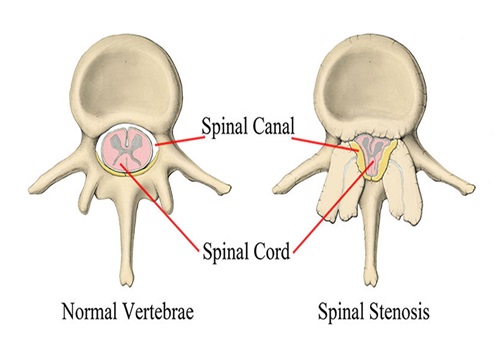
Symptoms of Spine Pain:
- Lower Back Pain: Often described as aching or throbbing.
- Leg Pain: Pain, numbness, or weakness in the legs, particularly when walking or standing for long periods.
- Neck Pain: Pain in the neck that may radiate to the shoulders and arms.
- Numbness or Tingling: Sensations in the arms, hands, legs, or feet.
- Difficulty Walking: A feeling of weakness or unsteadiness when walking.
- Loss of Balance: Problems with coordination and balance, especially in advanced cases.
- Bladder or Bowel Issues: In severe cases, there may be difficulties with bladder or bowel control.
Spin Pain Causes:
- Aging: The most common cause; the spinal canal can narrow due to degenerative changes in the spine.
- Arthritis: Osteoarthritis can lead to the formation of bone spurs that compress the spinal canal.
- Herniated Discs: Discs can bulge and press on the spinal cord or nerves.
- Spinal Injuries: Trauma or injury to the spine can cause narrowing.
- Genetic Conditions: Some congenital conditions can lead to a naturally narrower spinal canal.
- Spinal Tumors: Rarely, tumors can grow in or near the spinal canal, causing stenosis.
Lifestyle Effects to Spine Pain:
- Reduced Mobility: Pain and discomfort can limit the ability to perform daily activities and exercise.
- Work Limitations: Difficulty with physical tasks can affect job performance and productivity.
- Social Impact: Chronic pain and mobility issues can affect social interactions and activities.
- Mental Health: Persistent pain and disability can lead to stress, anxiety, or depression.
Prevention of Spine Pain:
- Regular Exercise: Engage in exercises that strengthen the back and core muscles, such as swimming or walking.
- Good Posture: Maintain proper posture while sitting, standing, and lifting to reduce strain on the spine.
- Weight Management: Maintain a healthy weight to reduce pressure on the spine.
- Avoid Heavy Lifting: Use proper techniques or avoid lifting heavy objects to prevent injury.
- Healthy Diet: Eat a balanced diet rich in nutrients that support bone and joint health.
- Regular Check-ups: Consult a healthcare professional for routine evaluations, especially if you have a history of spinal problems.
- Ergonomic Adjustments: Ensure that workspaces are ergonomically designed to support proper posture and reduce strain.
Degenerative Disc Disease
Degenerative Disc Disease (DDD) is a condition where the intervertebral discs of the spine lose their flexibility, elasticity, and shock-absorbing qualities. Despite the name, DDD is not actually a disease but a term used to describe the natural aging process of the spinal discs. It can lead to pain, reduced mobility, and other complications in the spine.
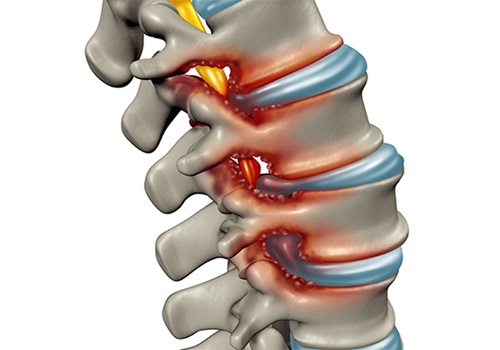
Symptoms of Spine Disc:
- Chronic Back Pain: Persistent pain in the lower back or neck that may worsen with certain activities.
- Radicular Pain: Pain radiating down the arms or legs due to nerve root irritation.
- Stiffness: Reduced range of motion in the spine, leading to stiffness.
- Numbness or Tingling: Sensations in the limbs if the spinal nerves are compressed.
- Weakness: Muscular weakness in the legs or arms in severe cases.
Spine Disc Causes:
- Aging: Natural wear and tear on the discs as people age, reducing their ability to absorb shocks.
- Herniated Discs: Discs can bulge or herniate, causing pain and nerve compression.
- Spinal Injury: Trauma or injury to the spine can accelerate disc degeneration.
- Genetics: Family history of spinal conditions may increase the risk of DDD.
- Lifestyle Factors: Poor posture, smoking, and obesity can contribute to the development of DDD.
Lifestyle Effects to Spine Disc:
- Reduced Mobility: Pain and stiffness can limit daily activities and reduce overall mobility.
- Impact on Quality of Life: Chronic pain can affect sleep, mood, and the ability to perform routine tasks.
- Physical Limitations: Difficulty in performing physical activities, such as exercise or heavy lifting, due to pain or discomfort.
- Emotional Impact: Persistent pain can lead to stress, anxiety, and depression.
Prevention of Spine Disc:
- Maintain a Healthy Weight: Reducing excess weight can lessen the strain on the spine.
- Regular Exercise: Engaging in low-impact exercises, like swimming or walking, to strengthen the back muscles and improve flexibility.
- Proper Posture: Practicing good posture while sitting, standing, and lifting to avoid undue stress on the spine.
- Avoid Smoking: Smoking can impair blood flow to the discs and accelerate degeneration.
- Ergonomic Adjustments: Using ergonomic furniture and practicing correct lifting techniques to minimize spinal strain.
- Stay Hydrated: Adequate hydration helps maintain the elasticity and health of spinal discs.
Scoliosis
Scoliosis is a condition where the spine curves abnormally to the side, creating a C- or S-shaped curve instead of a straight line. This condition can develop during childhood or adolescence, though it may also appear in adults due to degenerative changes.
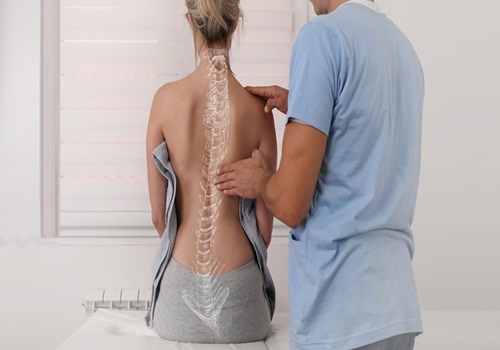
Symptoms of Scoliosis:
- Asymmetrical Waist: One side of the waist may look higher or more pronounced.
- Prominent Rib Cage: One side of the rib cage might stick out more than the other.
- Back Pain: Discomfort or pain in the back, which can be more noticeable in severe cases.
- Postural Changes: Noticeable changes in posture, such as leaning to one side.
Scoliosis Causes :
- Idiopathic Scoliosis: The most common type, with no known cause, often occurring during growth spurts in adolescence.
- Congenital Scoliosis: Caused by vertebral abnormalities present at birth.
- Neuromuscular Scoliosis: Results from conditions that affect the muscles and nerves, such as cerebral palsy or muscular dystrophy.
- Degenerative Scoliosis: Occurs in adults due to aging and degeneration of spinal discs and joints.
- Traumatic Scoliosis: Caused by spinal injuries or trauma.
Lifestyle Effects to Scoliosis:
- Physical Discomfort: Chronic back pain or discomfort can affect daily activities and quality of life.
- Reduced Mobility: Severe scoliosis may lead to decreased range of motion and difficulty with physical activities.
- Aesthetic Concerns: Visible curvature can impact self-esteem and body image.
- Functional Limitations: In extreme cases, scoliosis may interfere with breathing or organ function if it severely affects the rib cage.
Prevention of Scoliosis:
- Early Detection: Regular check-ups during growth spurts can help identify scoliosis early.
- Posture Awareness: Maintaining good posture and ergonomic practices can help manage mild cases and prevent progression.
- Strengthening Exercises: Exercises focusing on strengthening the back and core muscles can support spinal health.
- Healthy Lifestyle: Maintaining a balanced diet and engaging in regular physical activity can promote overall musculoskeletal health.
- Monitoring and Treatment: For individuals with a family history or other risk factors, regular monitoring by a healthcare professional can help manage and treat scoliosis effectively.
Osteoarthritis
Osteoarthritis (OA) is a common form of arthritis characterized by the breakdown of cartilage in the joints. It primarily affects older adults but can occur in younger people as well. The cartilage, which cushions the ends of the bones, deteriorates over time, leading to pain, swelling, and reduced joint mobility.

Symptoms of Osteoarthritis:
- Joint Pain: Pain during or after movement, and sometimes persistent pain even at rest.
- Morning Stiffness: Joints may feel particularly stiff after waking up or following periods of inactivity.
- Joint Swelling: Inflammation in the affected joints can cause noticeable swelling.
- Limited Mobility: Difficulty in moving the joint through its full range of motion.
- Grating Sensation: A noticeable grating or crunching sound when the joint moves.
Osteoarthritis Causes:
- Aging: Cartilage naturally wears down with age.
- Genetics: Family history of osteoarthritis can increase risk.
- Joint Injury: Previous injuries, such as fractures or dislocations, can contribute to OA.
- Obesity: Excess weight puts additional stress on weight-bearing joints.
- Repetitive Stress: Jobs or activities that involve repetitive joint stress can lead to OA.
Lifestyle Effects to Osteoarthritis:
- Pain Management: Osteoarthritis can impact daily activities and quality of life due to persistent pain and reduced mobility.
- Physical Activity: Regular exercise is essential but may be challenging for those with severe symptoms.
- Weight Management: Excess weight can exacerbate joint pain and contribute to the progression of OA.
- Sleep Disruption: Pain and discomfort may interfere with sleep quality, affecting overall well-being.
Prevention of Osteoarthritis:
- Maintain a Healthy Weight: Reducing stress on joints by staying within a healthy weight range.
- Stay Active: Engage in low-impact exercises like swimming, walking, or cycling to keep joints flexible and strong.
- Protect Joints: Use proper techniques and equipment during activities that put stress on the joints.
- Healthy Diet: Eat a balanced diet rich in nutrients that support joint health, including omega-3 fatty acids and antioxidants.
- Avoid Repetitive Stress: Modify activities or use ergonomic tools to minimize repetitive joint stress.
Sciatica
Sciatica is characterized by pain that radiates along the sciatic nerve, which runs from the lower back, through the hips and buttocks, and extends down one leg. This condition usually affects just one side of the body and is a symptom of an underlying issue rather than a standalone disorder.
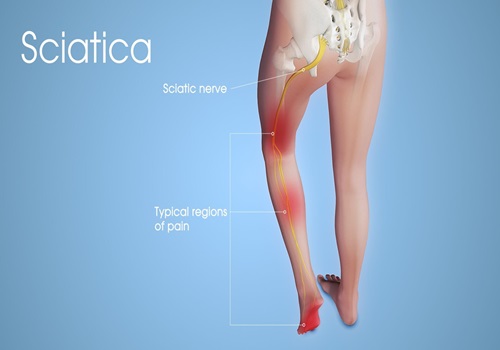
Symptoms of Sciatica:
- Pain: Sciatica often starts in the lower back or buttocks and radiates down the leg. The
pain can range from mild to severe stinging.
- Numbness: Affected areas may experience loss of feeling or tingling, particularly in the leg or foot.
- Weakness: There may be difficulty moving the leg or foot, sometimes accompanied by muscle weakness.
- Shooting Pain: The pain might feel like an electric shock, traveling down the leg.
Sciatic Causes:
- Herniated Disc: A disc in the spine may bulge and press on the sciatic nerve, causing pain.
- Spinal Stenosis: Narrowing of the spinal canal compresses nerve roots, including the sciatic nerve.
- Degenerative Disc Disease: Discs in the spine lose their cushioning ability, leading to nerve compression.
- Spondylolisthesis: A vertebra slips out of alignment, placing pressure on the sciatic nerve.
- Piriformis Syndrome: Occurs when the piriformis muscle in the buttock compresses or irritates the sciatic nerve.
- Spinal Tumors: Abnormal growths can press on the sciatic nerve.
- Trauma or Injury: Accidents or falls can injure the spine or sciatic nerve.
Lifestyle Effects to Sciatic:
- Functional Limitations: Sciatica can make it difficult to perform everyday tasks, such as walking or sitting for extended periods.
- Reduced Mobility: Chronic pain may limit movement and flexibility, impacting physical activity levels.
- Mental Health Impact: Persistent pain can contribute to stress, anxiety, and depression.
- Impact on Work and Social Life: The discomfort and limitations caused by sciatica can affect job performance and social interactions.
Prevention of Sciatic:
- Regular Exercise: Engage in low-impact activities like walking, swimming, or yoga to strengthen back muscles and enhance flexibility.
- Good Posture: Maintain proper posture while sitting and standing to reduce spinal strain.
- Proper Lifting Techniques: Use your legs to lift objects, not your back, and avoid twisting while lifting.
- Weight Management: Keep a healthy weight to lessen the burden on your spine and lower back.
- Ergonomic Work Setup: Use supportive chairs and desks to promote good posture and minimize back strain.
- Stretching: Regularly stretch your back and legs to maintain flexibility and prevent injuries.
- Avoid Prolonged Sitting: Take breaks to stand and move if your job requires extended periods of sitting.
